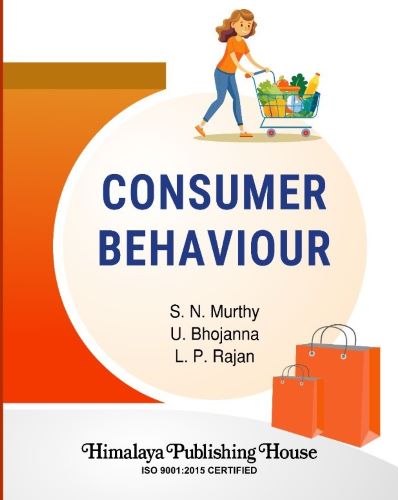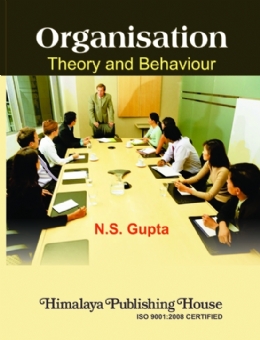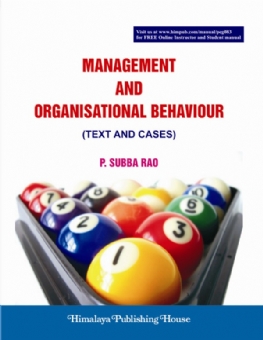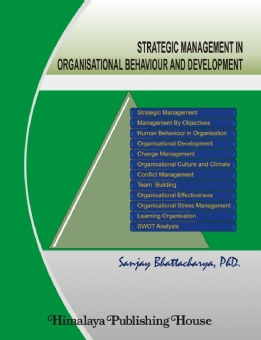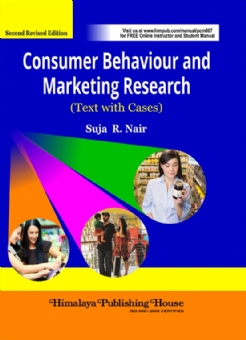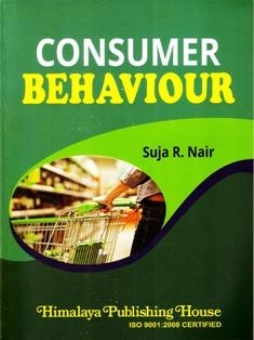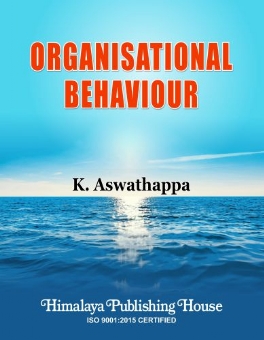This book has an exhaustive coverage of concepts and models of consumer behaviour that are topical and of current interest. It is written in simple language and caters to the needs of both students of Management, and practising Marketers. Various behavioural theories and concepts are explained lucidly that can be applied to understanding Consumer Behaviour and develop marketing strategies. The explanation of research techniques will help design consumer research.
Efforts have been made to keep the book up to date. The shopping behaviour of Gen Z, particularly the online shopping are dealt with in ‘Recent Trends in Marketing’. Marriage celebrations see a huge spending in India and is an important contribution to the Indian economy. This is dealt in the chapter On ‘Rituals and their link to Marketing’. Emerging concepts such as NIH Syndrome, PEE and Neuromarketing are addressed in the last chapter, so as to keep the reader abreast with latest concepts.
Numerous examples at every stage makes it easier for the reader to grasp the concepts. The questions, assignments and case lets at the end of each chapter enhance understanding and reinforce learning, so that application of these concepts becomes easier.
All in all this book should help get an excellent understanding of the Consumer in the Indian Environment and the present practices.
Contents –
Unit 1: Consumer Behaviour
1.1 Consumer Behaviour
1.2 Consumer Behaviour and Consumption Behaviour
1.3 Objective/Need to Study Consumer Behaviour
1.4 Nature and Characteristics of Indian Consumer
1.5 Application of Consumer Behaviour
1.6 Internal Factors Influencing Consumer Behaviour
1.7 Subliminal Perception
1.8 Attitude
1.9 Factors Involved in Attitude Formation: Group Factors
1.10 Characteristics of Needs and Goals
1.11 Role of Personality
Summary
Keywords
Review Questions
Assignments
Unit 2: Consumer Behaviour Model
2.0 Consumer Behaviour Models
2.1 Economic Model
2.2 Learning Model
2.3 S.R. Model or Pavlovian Model
2.4 Psychoanalytical Model
2.5 Input Output Process Model
2.6 Nicosia Model
2.7 Howard Sheth Model of Consumer Behaviour
2.8 Engel-Kollat-Blackwell Model
2.9 Black Box Model
2.10 Consumer Behaviour (Internal and External Influences)
Summary
Keywords
Review Questions
Unit 3: Consumer Decision Process
3.1 Meaning of Decision Making
3.2 Influence of Marketing Strategy on Decision Making
3.3 Types or Levels of Decision Making
3.4 Consumer Decision Making Process
3.5 Four Views of Consumer Decision Making
3.6 Online Consumer Behaviour
3.7 Difference Between Online and Offline Shopping
3.8 Online Behaviour Types
3.9 Situatioanal Factors that Influence Consumption
3.10 Advocacy
Summary
Keywords
Review Questions
Assignments
Unit 4: Consumer and Consumer Research
4.1 Consumer Research
4.1.1 Quantitative Research
4.1.2 Qualitative Research
4.2 Qualitative Research Methods
Summary
Keywords
Review Questions
Assignment
Unit 5: Motivation
5.1 Meaning of Motivation
5.2 Factors Influencing Goal Selection
5.3 Rational and Emotional Motives
5.4 Types of Notives
5.5 Theories of Motivation
5.5.1 Maslow’s Hierarchy of Needs
5.6 Dynamics of Motivation
5.7 Conflict in Motives
5.8 Causes of Motive Arousal
5.9 McGuire’s Psychological Motives
5.10 Relationship between Motives and Consumption
5.11 Motivational Research
5.12 Motivation Process and Customer Role
Summary
Keywords
Review Questions
Assignments
Unit 6: Personality
6.1 Personality
6.2 Theories of Personality
6.2.1 Trait Theory
6.2.2 Psychoanalytical Theory
6.3 Personality Influence on Consumer Behaviour
6.4 Marketing Application of Personality
6.4.1 Brand Personality
6.4.2 Brand Personification
6.4.3 Verbalisers vs Visualiser
6.4.4 Self–Concept
Summary
Keywords
Review Questions
Assignments
Unit 7: Consumer Perception
7.1 Consumer Perception
7.1.1 Stimulus
7.1.2 Elements of Perception
7.1.3 Marketing Application of Differential Threshold
7.1.4 Subliminal Perception
7.1.5 Perceptual Dynamics
7.1.6 Perceptual Organisation and its Components
7.1.7 Marketing Application of Perception
7.2 Consumer Imagery (Perception)
7.3 Perceived Risk
7.4 How Consumers Handle Risk?
Summary
Keywords
Review Questions
Assignments
Unit 8: Learning
8.1 Consumer Learning
8.2 Elements of Consumer Learning
8.3 Characteristics of Learning Process
8.4 Theories of Learning
Summary
Keywords
Review Questions
Assignments
Unit 9: Attitudes
9.1 Components of Attitude
9.2 Formation of Attitude in the Product Categories
9.3 Strategies for Changing Attitude
9.4 Attitudes: How they are Learnt
9.5 Sources of Attitude Formations
9.6 Various Methods Adopted to Divide the Attitude based on Functional Approach
9.7 Conflicting Attitudes and Methods of Resolution
9.8 Consumer Belief
9.9 Attribution Theory
9.10 Self-Perception Theory and its Marketing Implication
9.11 Models of Attitude
9.12 Attitude Towards Object Model
Summary
Keywords
Review Questions
Assignments
Unit 10: Persuasive Communication
10.1 Communication Strategy
10.2 Target Audience
10.3 Media Strategy
10.4 Message Structure and Presentation
Summary
Keywords
Review Questions
Assignments
Unit 11: Social Class
11.1 Social Class
11.2 Dynamics of Consumption
11.3 Features of Social Class
11.4 Historical Development of Class Categories in India
11.5 Importance of Indian Middle Class
11.6 Five Social Class Categories in India
11.7 Uses of Social Class in Market
Segmentation
Summary
Keywords
Review Questions
Assignments
Unit 12: Culture
12.1 Culture
12.2 Characteristics of Culture
12.3 Factors Affecting Culture
12.4 Elements of Culture
12.5 Indian Culture
12.6 Subculture
12.7 Cross Culture
12.8 Understanding Cross Cultural Marketing
12.9 Problems of Cross Cultural Marketing
12.10 Strategies to Overcome Cross Cultural Problems
12.11 Cross Cultural Marketing Strategy
12.12 Global Demographics
12.13 Global Influence on Consumer Behaviour
12.14 Marketing Intricacies in International Services
12.15 Relevant Questions in Developing Cross Cultural Marketing Strategy
Summary
Keywords
Review Questions
Assignments
Unit 13: Groups
13.1 Group
13.2 Family
13.3 Family Decision Making and Consumption Roles
13.4 Traditional Family Life Cycle and Marketing Strategies
13.5 Marketing and Traditional Family life Cycle
13.6 DSWI (Dual Spousal Work Involvement)
13.7 Dynamics of Husband–Wife Decision Making
13.8 Role of Children in Family Decision Making
13.9 Parents Role in Buying Behaviour of Children
Summary
Keywords
Review Questions
Assignments
Unit 14: Reference Group
14.1 Reference Group Meaning and its Explanation
14.2 Factors that Affect Reference Group Influence
14.3 Types of Reference Group
14.4 Reference Group Appeals
14.4.1 Celebrities
14.4.2 The Common Man
14.4.3 Executives and Employee Spokesperson
14.4.4 Trade Character
14.4.5 Spokes Character
14.4.6 Other Reference Group
Appeals
Summary
Keywords
Review Questions
Assignments
Unit 15: Opinion Leaders
15.1 Opinion Leader and Opinion Leadership
15.2 Characteristics of Opinion Leaders
15.3 Methods to Identify Opinion Leaders
15.4 Opinion Leadership and Marketing Strategies
15.5 The Market Maven
15.6 Consumer Innovators
15.7 Creation of Opinion Leaders
15.8 Managing Negative Publicity
Summary
Keywords
Review Questions
Assignments
Unit 16: Cognitive Dissonance
16.1 Meaning of Dissonance
16.2 Factors Influencing Dissonance During Purchase
16.3 Methods that can be Adapted by Customer to Reduce Dissonance
16.4 Marketer can help the Consumer to Reduce Dissonance
16.5 Consumption Guilt
16.6 Post Purchase Process
16.7 Customer Satisfaction and Customer Commitment
16.8 Product Use and Non-use
16.9 Disposition
16.10 Post Purchase Dissonance
Summary
Keywords
Review Questions
Assignments
Unit 17: Diffusion of Innovation
17.1 Meaning
17.2 Problem Faced in Diffusion of Innovation
17.3 Challenges Encountered in Diffusion of Innovation
17.4 The Innovation
17.5 Factors of Diffusion Depends on
17.6 Channels of Communication for Diffusion of Innovation
17.7 Time for Diffusion
17.8 Rate of Adoption
17.9 Adopter Categories
17.10 Adoption Process
Summary
Keywords
Review Questions
Assignments
Unit 18: Customer Relationship Management (CRM)
18.1 Meaning
18.2 Motivation for Companies to Adopt C.R.M Strategies
18.3 Difference between Marketing and C.R.M
18.4 Difference between C.R.M and Relationship Marketing
18.5 Significance of C.R.M
18.6 Types of C.R.M
18.6.1 Collaborative C.R.M
18.6.2 Analytical C.R.M
18.6.3 Operational C.R.M
18.7 Customer Service and Relations
18.8 Marketing Operational CRM
Summary
Keywords
Review Questions
Unit 19: Relationship Marketing
19.1 Relationship Marketing
19.2 Relationship Marketing Different from Tactical Marketing
19.3 Goals of Relationship Marketing
19.4 Bucket Theory
19.5 Benefits of Customer Retention to the Organisation and to the Customer
19.5.1 Benefits to the Organisation
19.5.2 Benefits to the Customers
19.6 Various Levels of Customer Retention
19.7 Recovery Strategy
19.8 Empowerment of Frontline Employees
Summary
Keywords
Review Questions
Assignments
Unit 20: Consumer Psychographics
20.1 Consumer Psychographics
20.1.1 Values
20.1.2 Self-concept
20.1.3 Lifestyle
20.2 Application of Psychographics
20.3 Psychographic Research has many Applications
20.4 Psychographic Segmentation
20.5 Psychographics vs Demographics
20.6 Psychographic Inventory
20.7 Problems Encountered in Global Market
Summary
Keywords
Review Questions
Assignments
Unit 21: Organisational Buying Behaviour
21.1 Difference between Organisational Buyer and Household Buyers
21.2 Features of Organisational Buyer
21.3 Products Bought by an Organisational Customer
21.4 Roles in Buying Centre
21.5 Decision–Making Process in Organisational Purchase or Buying
21.6 Factors Influencing Organisational Buying
Summary
Keywords
Review Questions
Assignments
Unit 22: Outlet Selection and Consumer Behaviour
22.1 Outlet Selection
22.2 Factors Influencing the Outlet Selection
22.3 Consumer Characteristics and Outlet Choice
22.4 Store Loyalty
22.5 Store Image
22.6 In–Store Stimuli
22.7 Unplanned Purchase
22.8 Strategies to Influence In–Store and Online Decision
22.9 Outlet Choice or Brand Choice
22.10 Stock Out Situation
Summary
Keywords
Review Questions
Assignments
Unit 23: Consumer Privacy and Ethical Issues
23.1 Issue of Consumer Privacy
23.2 Children and Consumer Privacy
23.3 Guidelines for Adults Privacy
23.4 Consumer Rights vs. Privacy
23.5 Abusing Consumer Privacy
23.6 Benefits of Consumer Privacy
23.7 Ethical Issues
Summary
Keywords
Review Questions
Assignment
Unit 24: Recent Trends in Consumer Behaviour
24.1 Consumer Trends
24.2 Current Consumer and their Behavioural Change
24.3 Factors Influencing Consumer Trends
24.4 Recent Trends in Consumer Behaviour
24.5 Gen Z Consumer Behaviour
Summary
Keywords
Review Questions
Assignment
Unit 25: Application of Consumer
Research to Direct Marketing
25.1 Direct Marketing
25.2 Research in Direct Marketing
25.3 Research and Application of Consumer Responses to Direct Marketing Approaches
25.4 Methods of Receiving Customer Feedback
25.5 Various Methods of Collecting Data from Customers
Summary
Keywords
Review Questions
Assignment
Unit 26: Rituals and their Link with Marketing
26.1 Rituals and Festivals
26.1.1 Meaning of Ritual Marketing
26.1.2 Implication of Rituals to Marketing
26.2 Rituals and its Interest to Markets
26.3 Process of Building Brands and Developing Markets through Rituals
26.4 Rituals a Case in Indian Marriages
26.4.1 Products/Brands Integrated to Marriage Rituals
26.5 Consumption Ritual
26.6 Sacred and Profane Consumption
Summary
Keywords
Review Questions
Assignment
Unit 27: Consumerism and Consumer Protection
27.1 Consumerism and the Rights of a Customer in India
27.2 Rights of Consumers
27.3 Consumer Protection Act, 1986
27.4 Redressal of Consumer Grievances or Consumer Movement in India.
27.5 Responsibilities of Customers
Keywords
Review Questions
Assignments
Unit 28: Emerging Concepts in Consumer Behaviour
28.1 NIH (Not Invented Here Syndrome)
28.2 Self-Reference Criteria
28.3 PFE (Proudly Found Elsewhere)
28.4 Neuro Marketing
Summary
Keywords
Review Questions
Assignments
Case Studies
Case Study 1: Not Fair Enough
Case Study 2: Guiding Star
Case Study 3: The Legacy of Lina Shoes
Case Study 4: Decision for Critical Care
Case Study 5: Boeing Going
Case Study 6: Food for the Mind
Case Study 7: Cosmetic Change v/s Deep Change
Case Study 8: Starbucks the Grand Brand Success
Case Study 9: Indian Food for Thought
Case Study 10: Royal Enfield Remains Royal
Case Study 11: Indian Middle Class Dilemma—Commodity V/s Brand
Case Study 12: Burnol-Burnout
Case Study 13: Legal and Ethical Issues of Consumerism
Case Study 14: Moonwalker — Not a walk in the Park
Case Study 15: Buying a Car — A Family Affair
Case Study 16: Shakti Auto — No Compromise on Quality

